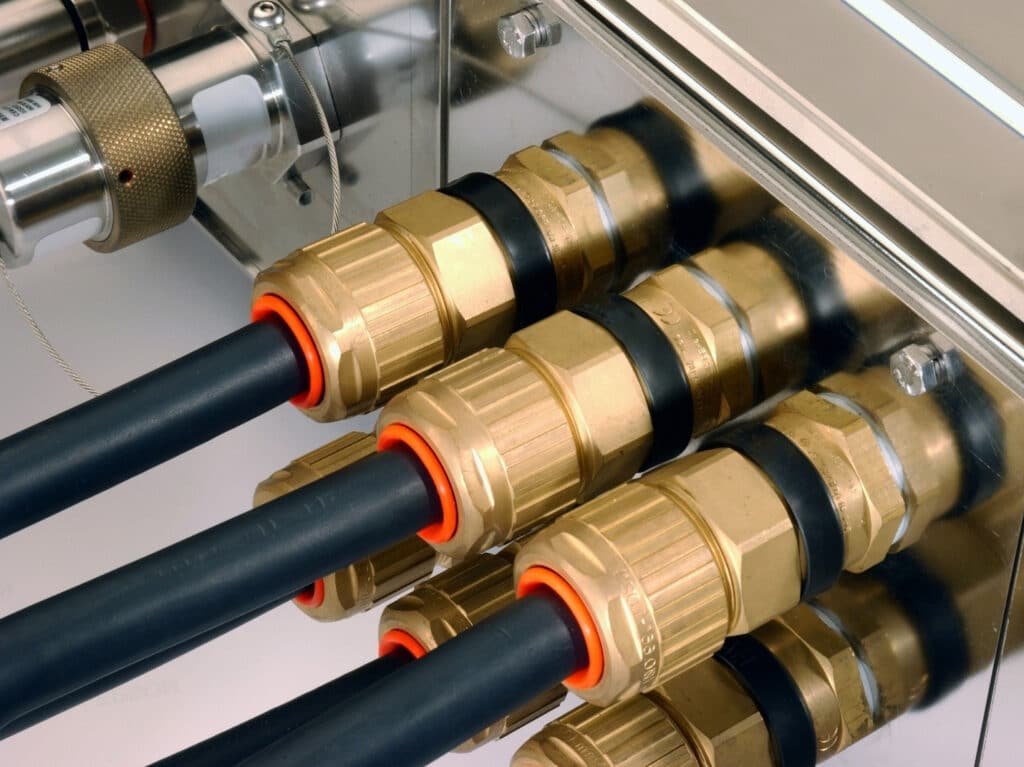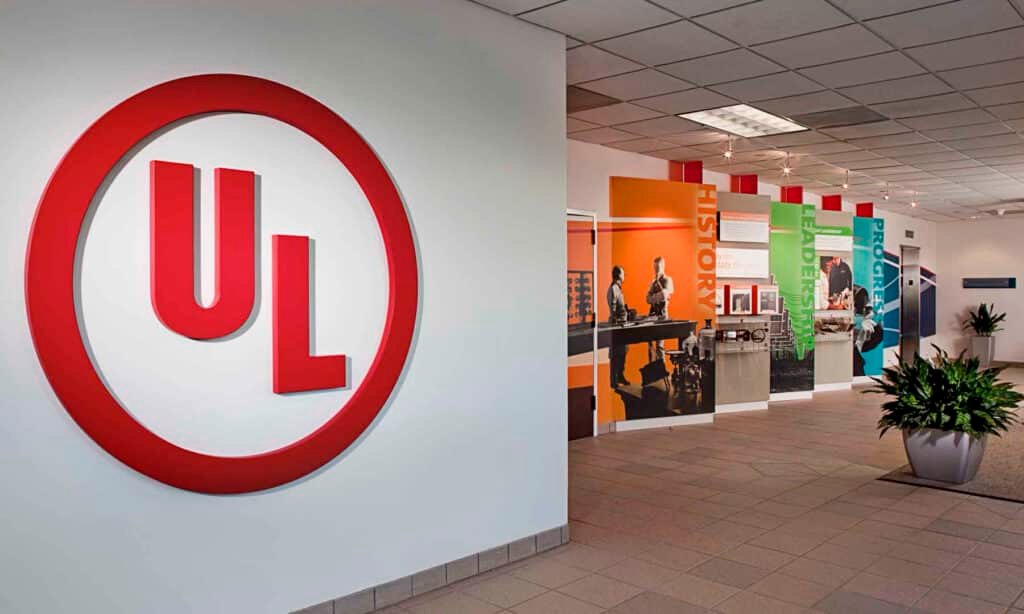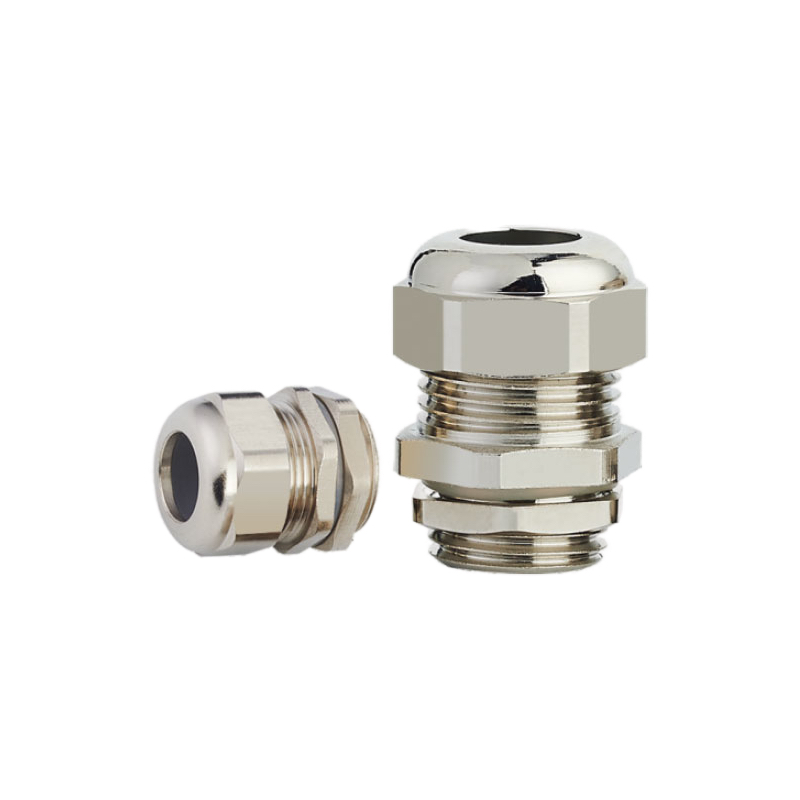Standard cable glands don’t always fit unique applications. When your project demands specific dimensions, unusual materials, or specialized certifications that off-the-shelf products can’t provide, you’re facing potential delays and compromised performance. Many engineers struggle with incomplete specifications that lead to costly revisions and extended lead times.
At specificere en brugerdefineret kabelforskruning kræver, at man definerer præcise tekniske krav, miljøforhold, certificeringsbehov og kriterier for ydeevne for at sikre optimal funktionalitet og overholdelse. A well-detailed specification prevents miscommunication and ensures your custom solution meets exact project demands.
I remember when Thomas, a senior engineer from a wind turbine manufacturer in Copenhagen, Denmark, contacted us last year. His team needed cable glands that could handle extreme temperature variations from -40°C to +85°C while maintaining IP68 rating and withstanding constant vibration. Standard products simply couldn’t meet these combined requirements, making custom specification essential for their offshore wind project success.
Indholdsfortegnelse
- What Makes a Cable Gland Application Unique?
- How to Define Technical Requirements for Custom Cable Glands?
- What Environmental and Certification Specifications Are Critical?
- How to Work Effectively with Custom Cable Gland Manufacturers?
- FAQs About Custom Cable Gland Specifications
What Makes a Cable Gland Application Unique?
Understanding when standard solutions fall short helps identify custom requirements early in the design process.
Unique cable gland applications typically involve non-standard dimensions, extreme environmental conditions, specialized materials, unusual cable configurations, or specific certification requirements that standard products cannot accommodate. Recognizing these factors early prevents costly design changes later.

Dimensional Challenges
Standard cable glands follow industry sizing conventions, but unique applications often require different approaches. Oversized cables, multiple cable entries in single glands, or space-constrained installations demand custom solutions. We’ve manufactured cable glands for cables ranging from 2mm to 150mm diameter when standard ranges couldn’t accommodate specific requirements.
Ekstreme miljøforhold
Standard products typically handle -20°C to +80°C temperature ranges and basic chemical exposure. Custom applications might require:
- Extended temperature ranges (-55°C to +200°C)
- Specialized chemical resistance (acids, solvents, hydrocarbons)
- Extreme pressure conditions (deep sea, high altitude)
- Radiation resistance (nuclear applications)
- Enhanced vibration resistance (transportation, machinery)
Specifikationer for materialer
While standard cable glands use common materials like nylon, brass, and stainless steel 316, unique applications might require:
- Exotic alloys1 (Hastelloy, Inconel, Monel)
- Food-grade materials (FDA-approved plastics)
- Non-magnetic materials (MRI environments)
- Specialized coatings (PTFE, ceramic)
Cable Configuration Complexities
Standard glands accommodate single cables, but custom applications might need:
- Multiple cable entries
- Mixed cable types (power and data)
- Kompatibilitet med pansrede kabler
- Fiber optic integration
- Hybrid connector solutions
How to Define Technical Requirements for Custom Cable Glands?
Precise technical specifications form the foundation of successful custom cable gland projects.
Define custom cable gland requirements by specifying exact dimensions, thread specifications, cable compatibility, sealing requirements, mechanical properties, and performance criteria with measurable parameters and tolerances. Clear specifications prevent misunderstandings and ensure optimal results.
Critical Dimensional Specifications
Specifikationer for gevind: Provide exact thread type (metric, NPT, BSP, PG), pitch, and engagement length. Include any non-standard threading requirements with detailed drawings. Specify tolerance requirements, typically ±0.1mm for precision applications.
Cable Entry Requirements: Define minimum and maximum cable diameters, number of cables, and sealing requirements for each entry. Include cable sheath materials and any armoring specifications that affect sealing design.
Overordnede mål: Specify maximum length, diameter constraints, and any space limitations. Consider installation access requirements and maintenance accessibility.
Performance Criteria Definition
Forseglingsevne: Specify required IP ratings under specific conditions. For example, “IP68 rating maintained at 10 bar pressure for 72 hours continuous immersion.” Include any dynamic sealing requirements for moving cables.
Mekanisk styrke: Define pull-out forces, vibration resistance levels, and impact requirements. Specify test standards like IEC 624442 for cable gland performance verification.
Elektriske krav: For EMC applications, specify Afskærmningens effektivitet3 requirements in dB across frequency ranges. Define insulation resistance and dielectric strength requirements where applicable.
Material and Chemical Compatibility
Create a comprehensive list of chemicals, temperatures, and exposure conditions the cable gland will encounter. Include:
- Chemical concentration levels
- Exposure duration (continuous vs. intermittent)
- Temperature during chemical exposure
- Cleaning agents and procedures
- UV exposure requirements
A petrochemical client in Houston, Texas, provided us with a detailed chemical compatibility matrix showing 15 different chemicals with varying concentrations and temperatures. This comprehensive specification enabled us to select the optimal material combination for their custom explosion-proof cable glands.
What Environmental and Certification Specifications Are Critical?
Environmental conditions and certifications directly impact material selection and design approaches for custom cable glands.
Critical environmental specifications include temperature ranges, chemical exposure, mechanical stresses, certification requirements, and installation conditions that affect long-term performance and compliance. Proper environmental specification ensures reliable operation throughout the product lifecycle.

Temperature and Climate Specifications
Driftstemperaturområde: Specify minimum and maximum operating temperatures with duration requirements. Include thermal cycling requirements if applicable. For example, “-40°C to +150°C continuous operation with thermal cycling from -20°C to +120°C, 1000 cycles.”
Storage and Transportation: Define storage temperature requirements and shipping conditions. Some materials become brittle at low temperatures or degrade during extended high-temperature storage.
Eksponering for kemikalier og miljø
Krav til kemisk modstandsdygtighed: List all chemicals with concentrations, contact duration, and temperature during exposure. Include cleaning chemicals and maintenance fluids. Specify test methods like ASTM D543 for chemical resistance verification.
UV- og vejrbestandighed: For outdoor applications, specify UV exposure requirements, ozone resistance, and weathering standards. Include color stability requirements if appearance matters.
Certification and Compliance Requirements
Sikkerhedscertificeringer: Specify required certifications like ATEX4, IECEx, UL, CSA, or CE marking. Include specific directive requirements like ATEX 2014/34/EU for explosive atmospheres. Each certification affects design constraints and testing requirements.
Industriens standarder: Reference applicable standards like IEC 62444 for cable glands, IP ratings per IEC 60529, or industry-specific requirements like API standards for oil and gas applications.
Krav til kvalitetssystemet: Specify required quality certifications like ISO 9001, IATF 16949 for automotive, or AS9100 for aerospace applications. These affect manufacturing processes and documentation requirements.
Overvejelser om installation og vedligeholdelse
Define installation constraints, accessibility requirements, and maintenance procedures. Include:
- Specifikationer for installationsmoment
- Tool requirements and accessibility
- Inspection and maintenance intervals
- Replacement procedures and spare part requirements
How to Work Effectively with Custom Cable Gland Manufacturers?
Successful custom projects require clear communication, realistic expectations, and collaborative problem-solving throughout the development process.
Effective collaboration with custom cable gland manufacturers involves providing complete specifications, establishing clear timelines, maintaining open communication, and participating actively in design reviews and testing phases. This partnership approach ensures optimal results and timely delivery.
Specification Documentation Best Practices
Technical Drawings: Provide detailed drawings with dimensions, tolerances, and material specifications. Include installation drawings showing how the cable gland interfaces with equipment. Use standard drawing conventions and include all relevant views and sections.
Krav til ydeevne: Create a comprehensive specification document including all technical, environmental, and certification requirements. Use measurable criteria rather than subjective descriptions. For example, specify “vibration resistance per IEC 60068-2-6, 10-2000 Hz, 20g acceleration” rather than “high vibration resistance.”
Application Context: Explain the application environment and critical performance factors. This helps manufacturers suggest optimizations and identify potential issues early in the design process.
Project Timeline and Milestone Management
Development Phases: Typical custom cable gland projects include:
- Specification review and clarification (1-2 weeks)
- Initial design and material selection (2-3 weeks)
- Prototype development (3-4 weeks)
- Testing and validation (2-4 weeks depending on certifications)
- Production tooling (4-6 weeks)
- Production and delivery (2-8 weeks depending on quantity)
Critical Path Items: Identify long-lead items like specialized materials, certification testing, or custom tooling. Plan these elements early to avoid project delays.
Kvalitetssikring og testning
Test af prototyper: Define acceptance criteria for prototype testing. Include both standard tests and application-specific validation. Consider accelerated testing to verify long-term performance within project timelines.
Kvalitetskontrol af produktionen: Establish inspection requirements, sampling plans, and acceptance criteria for production quantities. Define documentation requirements including certificates of compliance and test reports.
At Bepto, we maintain comprehensive project management systems that track all custom projects from initial inquiry through final delivery. Our ISO 9001 certified processes ensure consistent quality and clear communication throughout the development cycle. We provide regular updates and involve customers in key decision points to ensure optimal results.
Konklusion
Specifying custom cable glands for unique applications requires systematic attention to technical requirements, environmental conditions, and certification needs. Success depends on providing complete specifications, understanding application constraints, and working collaboratively with experienced manufacturers. Clear communication of dimensional requirements, performance criteria, and environmental conditions enables manufacturers to deliver optimal solutions that meet exact project needs. At Bepto, our decade of experience in custom cable gland development, combined with our comprehensive manufacturing capabilities and quality certifications, ensures reliable solutions for even the most challenging applications. Whether you need specialized materials, unique dimensions, or specific certifications, proper specification and collaborative development deliver results that standard products simply cannot achieve.
FAQs About Custom Cable Gland Specifications
Q: How long does it take to develop a custom cable gland?
A: Custom cable gland development typically takes 8-16 weeks depending on complexity and certification requirements. Simple dimensional modifications may take 6-8 weeks, while complex designs requiring new materials or extensive testing can take 12-20 weeks.
Q: What’s the minimum order quantity for custom cable glands?
A: Minimum quantities vary by complexity, but typically range from 100-500 pieces for simple modifications to 1000+ pieces for completely new designs. Tooling costs and development expenses are amortized across the production quantity.
Q: Can custom cable glands maintain standard certifications like ATEX or IP ratings?
A: Yes, custom cable glands can achieve standard certifications, but this requires additional testing time and costs. Design modifications must comply with certification standards, and testing typically adds 4-8 weeks to development timelines.
Q: How do I know if I need a custom cable gland or if a standard product will work?
A: If your application requires non-standard dimensions, extreme environmental conditions, specialized materials, or unique cable configurations that standard products cannot accommodate, custom solutions are necessary. Consult with manufacturers to evaluate standard alternatives before committing to custom development.
Q: What information do I need to provide for an accurate custom cable gland quote?
A: Provide complete technical specifications including dimensions, materials, environmental conditions, certification requirements, quantity needed, and timeline requirements. Include application details and any special performance criteria to ensure accurate pricing and feasibility assessment.
-
Explore the properties and applications of high-performance exotic alloys. ↩
-
Access the official overview of the IEC 62444 standard for electrical cable glands. ↩
-
Understand the concept of shielding effectiveness (SE) and its measurement in decibels (dB). ↩
-
Learn about the ATEX directive for equipment used in potentially explosive atmospheres. ↩



